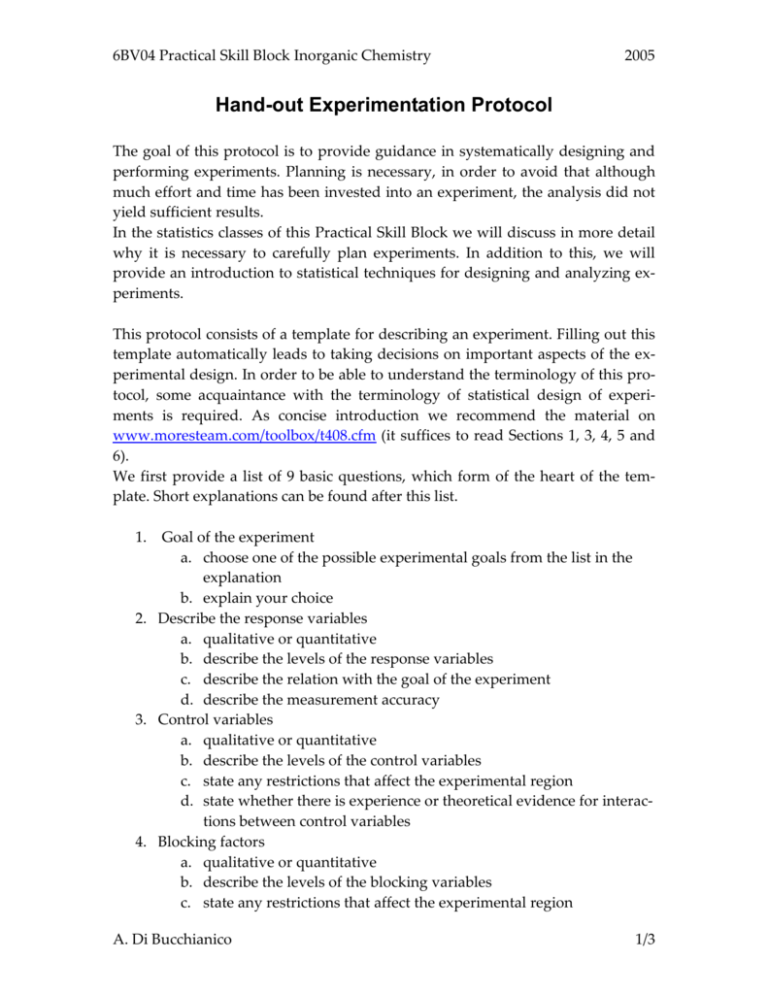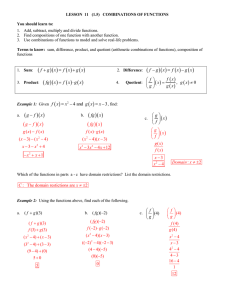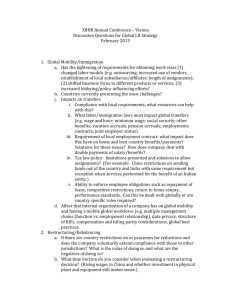Handout Experimenteerprotocol
advertisement

6BV04 Practical Skill Block Inorganic Chemistry 2005 Hand-out Experimentation Protocol The goal of this protocol is to provide guidance in systematically designing and performing experiments. Planning is necessary, in order to avoid that although much effort and time has been invested into an experiment, the analysis did not yield sufficient results. In the statistics classes of this Practical Skill Block we will discuss in more detail why it is necessary to carefully plan experiments. In addition to this, we will provide an introduction to statistical techniques for designing and analyzing experiments. This protocol consists of a template for describing an experiment. Filling out this template automatically leads to taking decisions on important aspects of the experimental design. In order to be able to understand the terminology of this protocol, some acquaintance with the terminology of statistical design of experiments is required. As concise introduction we recommend the material on www.moresteam.com/toolbox/t408.cfm (it suffices to read Sections 1, 3, 4, 5 and 6). We first provide a list of 9 basic questions, which form of the heart of the template. Short explanations can be found after this list. 1. Goal of the experiment a. choose one of the possible experimental goals from the list in the explanation b. explain your choice 2. Describe the response variables a. qualitative or quantitative b. describe the levels of the response variables c. describe the relation with the goal of the experiment d. describe the measurement accuracy 3. Control variables a. qualitative or quantitative b. describe the levels of the control variables c. state any restrictions that affect the experimental region d. state whether there is experience or theoretical evidence for interactions between control variables 4. Blocking factors a. qualitative or quantitative b. describe the levels of the blocking variables c. state any restrictions that affect the experimental region A. Di Bucchianico 1/3 6BV04 Practical Skill Block Inorganic Chemistry 2005 5. Resources a. indicate the time required for each run b. indicate how many runs may be performed simultaneously 6. Randomisation restrictions 7. Experimental lay-out: a. give full details of the runs of the initial experiment b. give full details of the runs of the main experiment c. give full details of the runs of the confirmation experiment Explanation Ad 1: Possible goals are: optimization of reaction time or yield, parameter estimation, discrimination between different reaction mechanisms, and finding significant/influential process variables (screening). Ad 2: The response variables are those variables that can be measured and cannot be directly set at certain values. It is required to indicate the possible values (levels in statistical jargon). Examples of response variables are yield and viscosity. If no final moment for a reaction can be determined beforehand, then it is likely that the response variable will follow a curve during the reaction. In such cases, it is essential to determine beforehand when to measure the response variables. Ad 3: The control variables (factors in statistical jargon) are those variables that can be varied by the experimenter. Restrictions in simultaneous factor settings have to be mentioned since they are restrictions of the experimental region. E.g., it may be the case that generally one may set temperature between 80 and 90 C and concentration between 0.1 and 0.2 M, but temperatures above 85 C require a minimal concentration of 1.5 M. Ad 4: It is not always possible to perform all runs under the same conditions. Blocking factors are factors that may have an important influence of the outcome of the experiments, but cannot be controlled by the experimenter (e.g., air humidity). Ad 5: Good planning also requires estimating the required time to perform the experiment. A run is a combination of settings of the control variables (e.g., temperature = 80 C and concentration = 1.5 M). Do not forget to include time to build up or change the experimental equipment or required warming-up time of the equipment. Ad 6: Runs must be performed in a random order in order to average out unanticipated external. Full randomization is not always possible. An example is a carrousel reactor in which several reactions take place simultaneously at a common temperature. In such a case full randomization is not possible with the factor temperature. A. Di Bucchianico 2/3 6BV04 Practical Skill Block Inorganic Chemistry 2005 Ad 7: If sufficient experimental resources are available, it is recommended to perform a small experiment preceding the main experiment. The goal of such an initial experiment is to learn about possible shortcomings in the experimental equipment or to obtain initial estimated of important process parameters. Confirmation experiments are useful to check results. E.g., in optimization experiments one should perform runs in the vicinity of calculated optimal settings, if no observations have yet been performed there. The description of the experimental lay-outs minimally contains details of the runs to be performed (e.g., run 1: temperature = 80 C, concentration = 0.2 M; run 2: temperature = 60 C, concentration = 0.3 M etc). One should also indicate whether observations should be performed in duplo or triplo. A. Di Bucchianico 3/3











